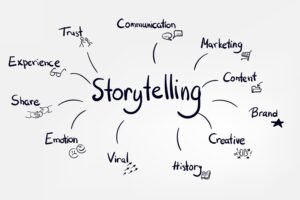Do you think your web site looks “fine?” Do you think the graphics, including your logo, look good? Do you think the text is easy to read? Do you think it’s easy to find information on your web site?
Now, let’s do a little test: think of something you need information about, search for it in your favorite web browser, then click a link in the search results that looks like it will contain the information you are looking for. Once on that web site, look for the information you are seeking. How long did it take you to find the desired information? Was the information easy or difficult to find? Was the web site easy to navigate and read?
If you were able to find the information quickly and easily, then this means the web site was designed well, and the web site designer took the visitor into consideration when designing the web site. It is considered to be a “modern web site.”
If someone were to perform the same test on your web site, what would their experience be? How would they answer these questions? Would visitors agree with you that your web site is “fine?”
Often times, your web site is the first impression that a potential customer has of your business. This means it is your first opportunity to create trust with them. Therefore, it’s important that your web site look good aesthetically in order to keep visitors on your web site, and hopefully take the next step by contacting your business. This includes having a pleasing color scheme, easy-to-read fonts, and clear graphics (preferably high resolution graphics). However, your web site also has to work well for the visitor. If your web site is not user-friendly and the visitor can’t find the information they are looking for, the visitor might decide to leave your web site and go elsewhere.
Because most consumers have mobile devices and actively use them to search the internet, it’s vital that your web site not only look good and work properly on desktop and laptop computers, but on tablets and smartphones as well. Having a well-designed mobile responsive web site not only affects the visitor’s experience, but affects SEO (Search Engine Optimization) and Google search results as well. Google uses numerous algorithms, which are constantly being updated, to determine where web sites display in their search results – if your web site is not mobile responsive, it will likely not display very high in Google’s search results, increasing the chances that potential customers will not find your web site in the search results when they perform a search.
A modern web site design is not only important on the front end for the visitor’s experience, but on the back end (invisible to the web site visitor) as well. For example, your web site should have standard SEO elements built into it. This includes the following:
- Friendly URLs: A “friendly” URL is one that is descriptive of the web page – it describes the web page to search engines and also helps visitors to your web site remember the URL.
- Blog post titles: The titles for your blog posts should be relevant and descriptive of the post.
- Site maps: Site maps ensure that search engines index your site correctly during the crawling process.
- Image ALT attributes: All images on a web site should have a description in the ALT (alternate) field. This will help with your web site’s search rankings since search engines can’t “see” images. In the United States, it is considered an act of discrimination against those with disabilities, as described in ADA 508 (the Americans with Disabilities Act), to not use ALT attributes in images.
In general, remember that balance is key in a modern web site design. It is important to balance both the design of your web site and what search engines are looking for to ensure a positive experience for visitors to your web site, and so potential customers can easily find your web site in related search results.
If you would like to learn more about modern web site design and how we can design one for your business, please feel free to contact us at [email protected].




